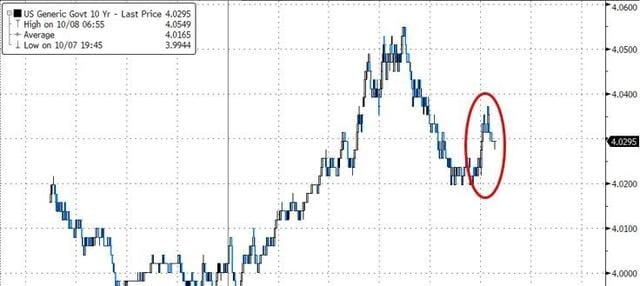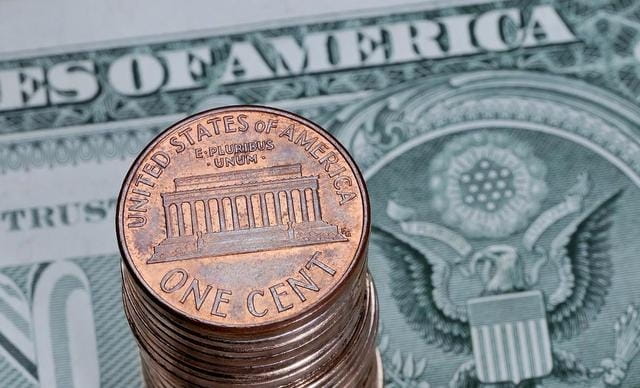The ever-changing financial market is always a dizzying sight. A striking phenomenon is quietly happening: China continues to reduce its holdings of U.S. Treasury bonds, while U.S. Treasury auctions are met with a cold reception. What kind of economic logic is hidden behind this series of events? Let us explore the mystery together.

In the global economic landscape, U.S. Treasury bonds have always played a pivotal role. However, the results of the recent U.S. Treasury auction were surprising. The winning rate of the 3-year U.S. Treasury bond was as high as 3.878%, a record high. However, investors seemed to be less interested and their enthusiasm for participation was far less than before. This abnormal phenomenon has attracted market attention.
China, once the largest holder of U.S. debt, is gradually reducing its holdings of U.S. debt from a peak of $1.3 trillion to $805 billion today, a decrease of nearly 40%. This move has undoubtedly brought a significant impact on the U.S. debt market.
In this financial game, the Fed plays a particularly critical role. Faced with a complex economic situation, the Fed has to seek a balance between cutting interest rates and maintaining the price of U.S. debt. The side effects of the interest rate cut policy cannot be ignored. International capital has begun to flow to other markets, especially the Chinese asset market.
Since the United States implemented the interest rate cut policy, China's A-share market has risen by more than 20% in just one week. Such an amazing return rate has undoubtedly attracted the attention of global investors. Wall Street capital is ready to move and has turned its attention to the Chinese market.
Faced with this situation, the US government had to take some measures to save the situation. They tried to show the strong momentum of the US economy by modifying economic data. However, this approach further limited the Fed's room for interest rate cuts, causing US bond prices to plummet and investors' desire to buy US bonds to drop sharply.
The US dollar, US stocks and US bonds form an "impossible triangle" that is difficult to reconcile. The Federal Reserve faces a difficult choice: to maintain high interest rates to attract capital, or to lower interest rates to stimulate the economy? Either choice will have a profound impact on the US economy.
China is adjusting its foreign exchange reserve strategy. According to data from the State Administration of Foreign Exchange, China's foreign exchange reserves have reached 331.64 billion US dollars. In terms of currency reserves, China is more inclined to choose non-US dollar currencies, which will undoubtedly further affect the demand for US debt market.
It is worth noting that not only China has reduced its holdings of U.S. debt, but other major holders such as Japan have also taken similar actions. If this trend continues, the U.S. debt market may face greater pressure, and the Federal Reserve may have to adopt more aggressive quantitative easing policies to maintain market stability.
There are still many uncertainties in the direction of the U.S. bond market. The continued expansion of the U.S. fiscal deficit, changes in the global economic situation, and adjustments in monetary policies of various countries will have a profound impact on the U.S. bond market. Investors need to pay close attention to changes in these factors in order to make wise investments.
Federal Reserve policymakers are facing a difficult problem. They need to stimulate economic growth by cutting interest rates. On the other hand, they need to prevent large-scale capital outflows. This dilemma makes the Fed attract much attention every time. If they continue to cut interest rates, it may intensify the flow of funds to emerging markets such as China. If they maintain high interest rates, it may suppress domestic economic vitality.
The performance of China's asset market is remarkable. The strong rebound of the A-share market has not only attracted the attention of domestic investors, but also attracted the attention of international capital. If this trend continues, it may further change the pattern of global capital flows. Wall Street investors are paying close attention to this trend, and some have even begun to adjust their investment portfolios.
The rise in China's asset markets is not an isolated event. It reflects the resilience and potential of the Chinese economy, as well as the confidence of international investors in China's economic prospects. As China continues to promote the opening up and reform of its financial markets, its attractiveness may be further enhanced, which will undoubtedly bring greater pressure to the US financial markets.
The difficulties in the U.S. bond market also reflect the deep-seated problems facing the U.S. economy. The continued expansion of the fiscal deficit, the growing debt burden, and the potential inflation risk are all challenges that Americans need to face seriously. If these problems are not effectively resolved, the attractiveness of the U.S. bond market may further decline.

It is worth noting that China's reduction of its holdings of U.S. debt does not mean that it will completely abandon its U.S. dollar assets. This may be a more diversified asset allocation strategy. China is seeking a balance between safeguarding its own interests and avoiding excessive impact on the global financial market. This cautious and flexible strategy reflects China's responsibility as a responsible major country.
For ordinary investors, this complex international financial situation means both opportunities and challenges. The performance of China's asset market provides investors with new options. On the other hand, the fluctuations in the U.S. bond market may also bring investment opportunities. The key is to keep a clear head and do a good job of risk assessment and asset allocation.
In the long run, the "cold winter" of the U.S. bond market may push the United States to carry out deeper economic reforms. The United States may need to re-examine its fiscal and monetary policies and find a more sustainable development path. This is not only related to the interests of the United States itself, but also to the stability and prosperity of the global economy.
The performance of Chinese assets also provides new ideas for global investors. As China's economy continues to develop and its financial market continues to mature, its position in global asset allocation may further increase. This change not only reflects the rise and fall of economic strength, but also heralds a profound change in the global financial landscape.
In this international financial chess game, each participant is trying to find the best strategy. The United States needs to find a balance between maintaining the dollar's hegemony and stimulating economic growth; China is prudent in managing its foreign exchange reserves while actively promoting the development of its own asset market. The outcome of this game will have a profound impact on the future direction of the global economy.
We cannot ignore the impact of this change on ordinary people. The volatility of the U.S. bond market may affect the retirement funds and savings of American people; the performance of the Chinese asset market may bring new opportunities to Chinese investors. In this interconnected world, every fluctuation in the financial market may affect thousands of households.




